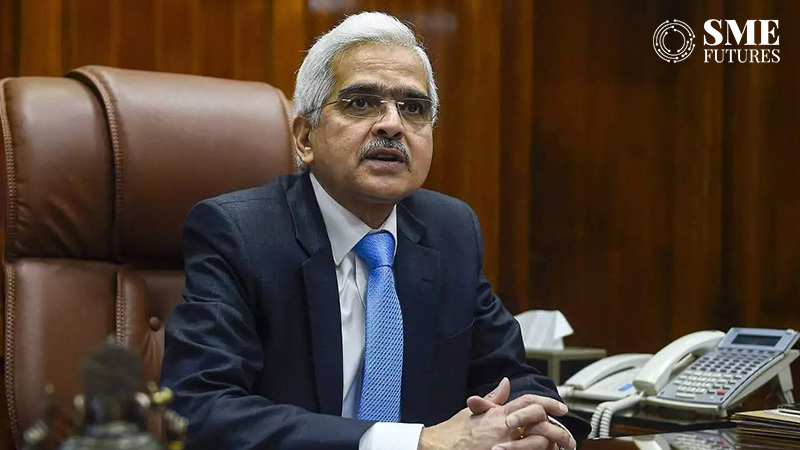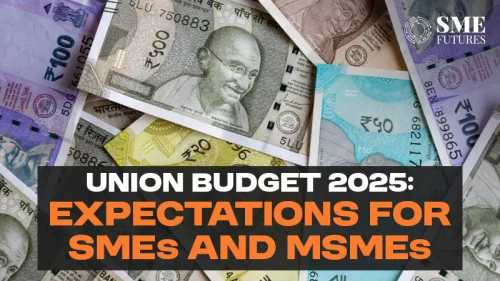In its recent meeting, the Reserve Bank of India (RBI) decided to maintain the Repo Rate at 6.5 per cent, continuing with a status quo policy. This decision comes amid changing economic dynamics and global uncertainties. Industry experts share their insights on the RBI’s move and its implications.
Read here: RBI retains repo rate for fifth time
Sonam Srivastava, Founder and Fund Manager of Wright Research said, pausing repo rate is a positive signal for the industry. It suggests a continued focus on balanced economic growth while keeping inflation in check, which is crucial for sustainable economic health. This approach should support stable business operations and potentially encourage investment and growth across various sectors.
Sanjeev Agrawal, President of PHD Chamber of Commerce and Industry highlighted the RBI’s commitment to maintaining stability by keeping the repo rate unchanged.
“The MPC is concentrating on the removal of accommodation while promoting development. This decision aims to ensure financial stability, check inflationary pressures, and promote continued economic growth in India. In the future, it will keep a close eye on food inflation and global slowdown trends to ensure that the economy continues its buoyancy in growth. The monetary policy will remain vigilant and prepared for policy changes as warranted,” he said.
An expected move
For Suman Chowdhury, Chief Economist and Head – Research, Acuité Ratings & Research, it was an expected move. He noted the expected continuation of the pause mode on monetary policy and the unchanged repo rate at 6.5 per cent. He observed a reduction in hawkishness, signaling a potential review of the policy stance in subsequent meetings.
“Clearly, RBI is more optimistic on the domestic growth prospects after the release of GDP data for the second quarter which placed GDP growth for H1 at 7.7 per cent YoY. Compared to its earlier growth forecast of 6.50 per cent for FY24, the revised growth forecast of the central bank stands materially higher at 7.0 per cent. Given the expected moderation in rural demand in H2 and the weaker private consumption growth at 3.1 per cent in Q2FY23, Acuité Research has however, pegged the growth forecast relatively lower at 6.50 per cent,” Chowdhury said.
From the inflation perspective, RBI MPC has maintained the CPI inflation forecast at 5.4%. However, it has also sounded a caution on the upside risks to food inflation due to supply shocks in the near term, reiterated its target CPI inflation of 4.0%, and indicated that supply-side risks will make the MPC exercise caution before any revision in the benchmark rates. Further, the strong growth expectations will also not put any pressure on the MPC to go for a rate reduction in haste and we continue to believe that any such rate cut is unlikely to happen before the second half of CY24.
The statement has also addressed the market concerns on liquidity by clarifying that OMO will be adopted only if required and currently, the liquidity is already in a relatively tight mode. Further, an operational issue for banks and money market participants has been resolved by permitting balance adjustments to the MSF and SDF in holidays and over the weekends. This will help in normalizing the sharp swings in system liquidity and prevent excessive volatility in call money or other short-term rates.
RBI has also talked about a “unified regulatory framework on connected lending” which highlights that the central bank has concerns on lending excesses through NBFCs and risks of multiple lending and plans to address it through appropriate data tracking and policies.”
Inflation woes
According to Anil Rego, Founder and Fund Manager at Right Horizons, this decision is on the back of persistent inflation and comes at a time as inflation moderates in a resilient growing economy.
In October 2023, the annual retail price inflation in India decreased to 4.87 per cent, marking the lowest level in four months, as opposed to the 5.02 per cent recorded in September. Additionally, India’s wholesale prices experienced a year-on-year contraction of 0.52 per cent in October 2023, following a 0.26 per cent decline in the previous month. Brent Crude trades close to 75$ per bbl despite the extended supply cuts as the market is focused more on demand than supply.
The GDP recorded a robust economic growth rate of ~7.7 per cent in H1FY24 exceeding expectations.
“Since inflation is moderating, economic activity is steady, oil prices are lower and India is poised to be the growth engine for the global economy the markets were expecting the repo rate to be unchanged at 6.5 per cent. We believe markets in the near term will now be driven by the upcoming earnings season and the 2024 elections,” said Rego.
Markets have touched new highs, especially with earnings for the H1FY24 coming healthy supporting the trajectory. Investors are bullish as they are favouring rate cuts in 2024 which will unanimously boost the equity markets, he added.
He points out that the banking sector is the most sensitive to changes in rate cycles and has been a major reason for incremental earnings in FY23 and in H1 of FY24 benefitting from the hikes and credit growth being robust and persistent.
“Prolonged rate cuts will eventually lead to narrowing NIM but we expect rate cuts to begin in the last quarter and hence the trend in the banking sector is likely to continue in FY24. NBFCs will be best positioned to benefit from cuts in rates as credit growth will improve followed by banks. Also, credit-sensitive sectors like auto and real estate will see higher demand,” he said.
Stock market to rally
Sreeram Ramdas, Vice President, Green Portfolio PMS predicts that the stock market is likely to react positively to the RBI’s recent announcements.
“This stability, combined with India’s strong economic fundamentals and GDP growth, is likely to boost investor confidence. The banking sector may benefit from the steady interest rate environment, as it aids in better margin management. Furthermore, sectors like healthcare and education might receive a positive impact from the enhanced UPI transaction limits, enabling more significant financial transactions in these areas.
“The emphasis on inflation control and potential supply-side shocks could mean cautious investment in sectors heavily reliant on raw material prices. Overall, the stock market is likely to experience a steady momentum, buoyed by a stable policy environment and strong economic indicators. This is a very bullish indication of where the economy is headed, but not so much for the markets,”











